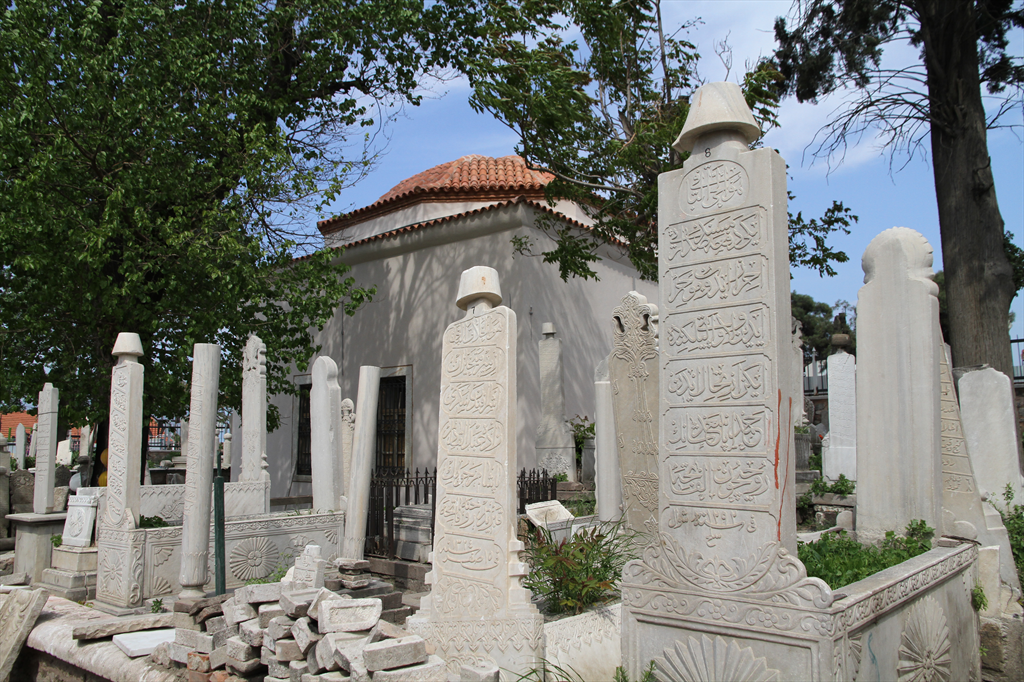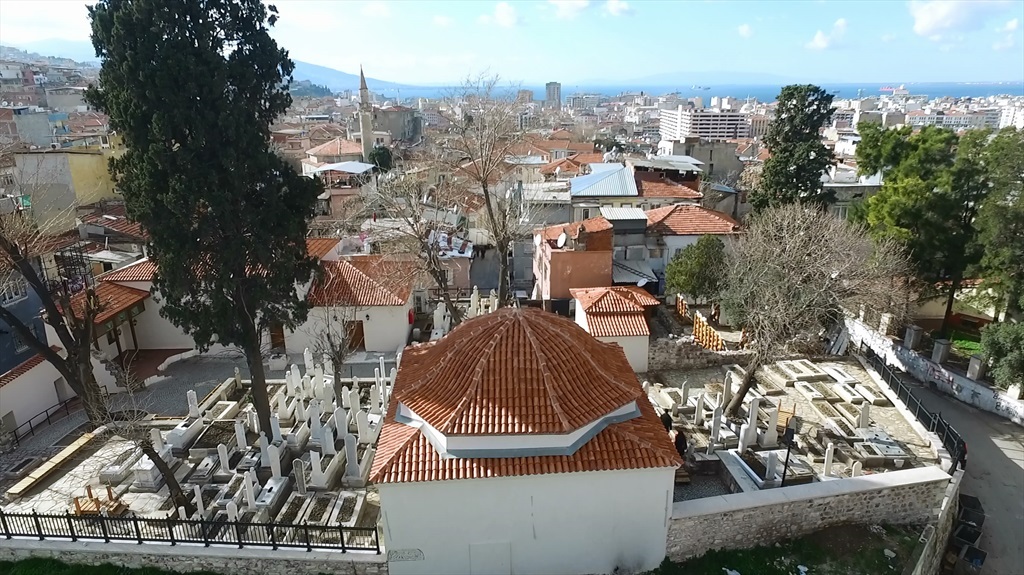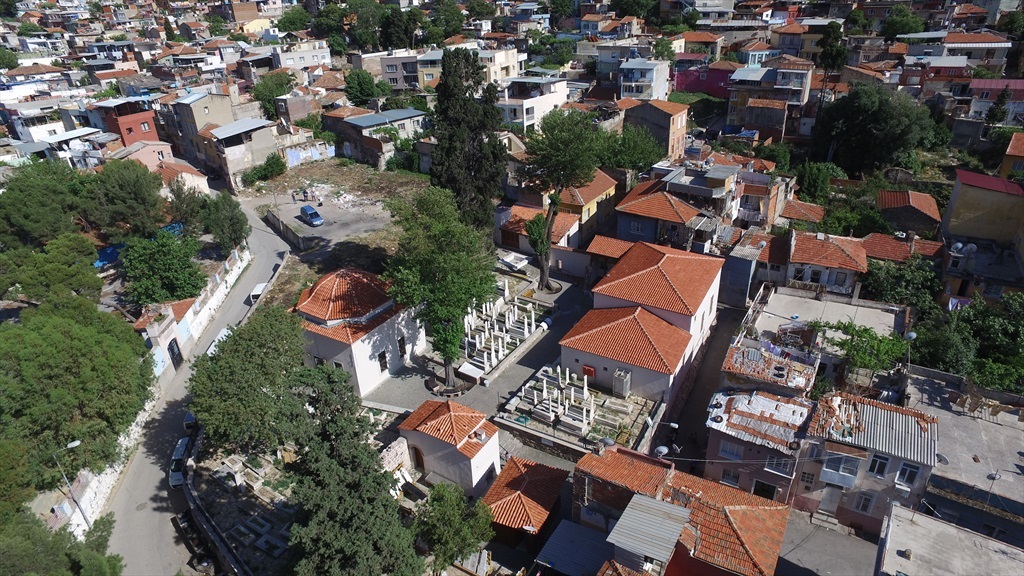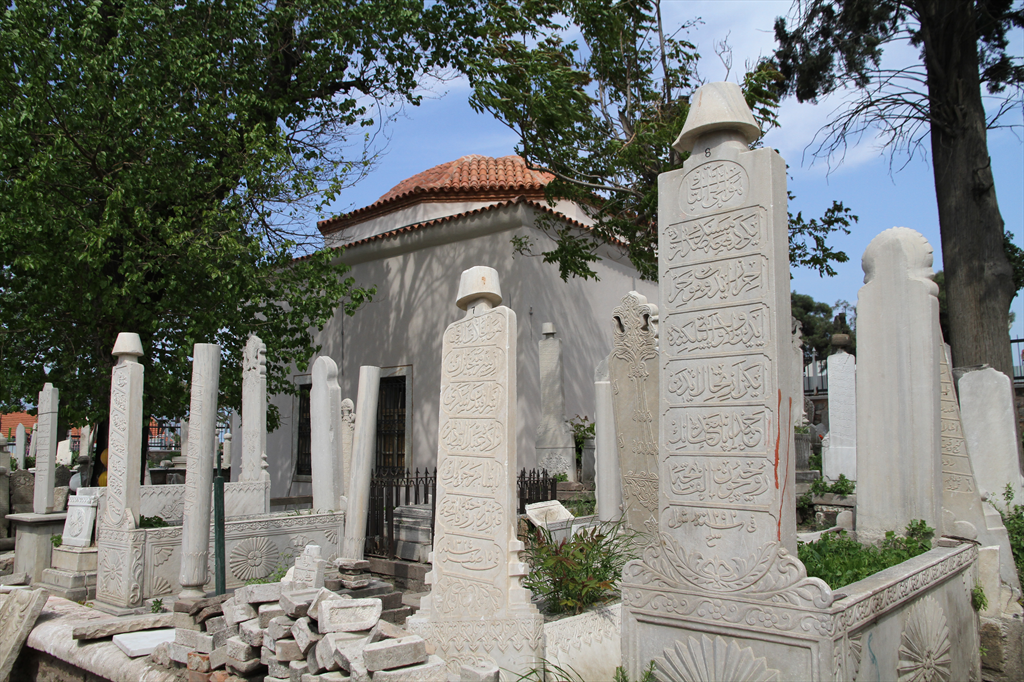Emir Sultan Mauseloum And Zawiyah
You are in front of the Emir Sultan Tomb, which has a 700-year history. The tomb, which belongs to the first half of the 14th century, was built by Aydınoğlu Gazi Umur Bey for Seyyid Mükeremeddin. Seyyid Mükeremeddin is one of the veterans-dervishes who participated in the conquest of Izmir. It is recorded that he died during or just after the conquest and was buried where his tomb was located. The lodge, which formed around the tomb over time, also formed the core of the Sheikh Quarter, which it named.
The history
The building consists of a semahane, a soup kitchen, a guest house, a tomb, a well and a bath. For the expenses of the mausoleum and the lodge, Gazi Umur Bey donated the income of Seydiköy, which is the basis of today's Gaziemir district.
Treasures were formed when respected people of Izmir were buried around Emir Sultan Tomb. The prominent names of their times such as Uşakizade, grandfather of Mustafa Kemal Atatürk's wife Latife Hanım, Sadık Bey and his wife Makbule Hanım, Ahmet Esat Pasha, one of the governors of Izmir, Ahmet İzzet, the last governor of İzmir, Sheikh Nuri Efendi, the last Mevlevi sheikh of Izmir, Şehri Bey, one of the doctors of Gureba-i Muslim all lie here. The grave of Miralay Süleyman Fethi Bey, who was martyred during the occupation of İzmir, was here until 1988, and was later transferred to the military martyrdom in Narlıdere. You can see the symbolic tomb of Süleyman Fethi Bey here. In Emir Sultan's small cemetery, 169 tombs from the 16th to the 20th centuries were found.
The hemispherical dome of the tomb, which is the most important structure of the lodge, sits on an octagonal drum. The dome is covered with Turkish style tiles from the outside. You can see plaster decorations belonging to the late Ottoman period in the transition area to the dome, the dome skirt and the mihrab sections. Between the arches, there is a plaster badge with the names of the four caliphs and three crescent-star motifs around these badges.
Not only the tomb, but also the walls of the bath and the surrounding residences will attract your attention with ornamented or inscribed reused stones brought from Roman or Byzantine period structures.
The tomb, which sits on an area of approximately 1400 square meters, was opened to visitors by the Izmir Metropolitan Municipality after a comprehensive restoration between 2011-2014.
* It is the name given to building materials that are taken from old structures and reused in architectural structures.












Comments
No comment left, would you like to comment?